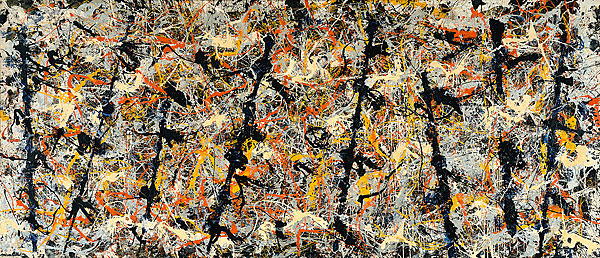REVIEW for
Onlinebookclub.org
https://onlinebookclub.org/reviews/by-doctorshoot.html
BRIEF SUMMARY:
The book The Girl Who Knew DaVinci is a the first of
a three series set of thriller novels by American author publishing as Belle
Ami.
The Girl Who Knew DaVinci takes the reader on a wild
and breathtaking ride through time as the novel’s central characters attempt to
make sense of their own visions, feelings and relationships.
The plot is driven by the search for a fabulous painting,
possibly done by Leonardo DaVinci, and likely worth millions at auction for the
lucky finder.
The author creates an original psychological landscape to
challenge the reader. As the novel unfolds the central characters, who are
featured by DaVinci in the fabulous lost painting, strive to honour and fulfil
their passionate love for each other, all in the face of destructive
circumstance and the evil intent of others.
The novel is set mainly in Italy and is loaded with
sumptuous settings of architecture, art, and food throughout what is a lavish
journey of imagery for the reader.
Early in the novel the author steps forward and demands that
the reader suspend belief and attachment to reality. Once that is achieved the
reader is then escorted through a series of cyclic time capsules as the various
aspirations and relationships of the characters unfold, and of course as the
search for the painting heads toward its inexorable climax.
The art and setting references are well researched and provide
many uplifting and enjoyable experiences for lovers of Italy and of high
Renaissance art.
POSITIVE ASPECTS:
The Girl Who Knew Da Vinci is fast paced and the
author skillfully provides plenty of hooks to keep the reader involved and
turning the pages. The plot is solid and logical.
What at first seems a disparate and distant set of arenas quickly
becomes unified into a single theatre for the characters to interact and to
pursue their struggles for redemption and/or fulfillment. The reader gets to
know the characters from both objective and subjective viewpoints.
The novel takes us on a well-researched and luxurious
journey through Renaissance Italy then and now with the finest of Italian
culture on display. The book is a feast for lovers of fine art, good food, and
intricately woven suspense.
The novel is filled with entertaining easter eggs for fans
of Renaissance thrillers, with some tongue-in-cheek allusions to biblical and
other icons thrown in for good measure. If you can embrace the tenor of the
plot, then a very rewarding read is on offer.
NEGATIVE ASPECTS
The author relies heavily upon stereotypes to structure the main
characters: The female lead is an intelligent but naive orphan female needing a
knight in shining armour; The male lead is a millionaire playboy with a gun and
all the toys, excessive libido, and sleazy disrespectful small-talk (which the
needy and inexperienced female laps up); The bad guys have confused and
indistinct motives and the main baddie is a cardboard cut-out of a bad guy seen
so many times before.
I felt that an author capable of delivering such a skilled
narrative plot, should be capable of delivering more complex characters; a
little more original and challenging to elevate the engagement of the reader.
The minor evil characters intended to drive the suspense are
unoriginal stereotype mafia/nazi etc etc evil killers without depth or
originality.
There are several oral profanities from the minor characters
in the third section of the story, however I felt they were justifiable in
terms of establishing the cultural perspective of individuals only briefly seen
in the novel.
The final third of the novel stalls totally in relation to
character development. As the plot heads toward its denouement the central
characters languish in a sexual morass where the only distinguishing
developments are the decadent and suppliant descent of the lead female into helpless
dependence, and the libido driven dominance of the lascivious hero. The
repetitious lovemaking between the main hero characters is described and
overstated beyond anything necessary to the story and I found this indulgence
repetitious, boring, and a frustrating waste of reading time.
RATING:
3 out of 5
I give this rating because I think that whilst the author
displays high level plotting and descriptive capacity, and has produced a
lively and descriptive story, the characters are unoriginal, and are mostly
fitted into scenes without any complexity of motivation other than greed or
lust. As a result the novel, whilst entertaining and gripping as a story,
leaves the reader with one dimensional characters.
RECOMMENDATION:
Definitely worth as read as a fun indulgence for racy plot
lovers.
Bit heavy on the sex, so only for mature readers.
ERRORS
First error: noted on p2
(may have been intentional but not obvious why):
‘Then I rolled it in lamb’s wool and fit it in
a thick cardboard tube….’
Ami,
Belle. The Girl Who Knew DaVinci (Out of Time Thriller Series Book 1) (p. 2).
Tema Merback. Kindle Edition.
Second error; I did not like oblivious of in the
following text as I was taught one may be oblivious of a concept, but oblivious
to a physical presence. This may merely be me splitting hairs.
‘She was oblivious of him and showed no sign that her
private sojourn had been intruded upon.’
Ami, Belle. The Girl Who Knew Da Vinci (Out of Time
Thriller Series Book 1) (p. 11). Tema Merback. Kindle Edition.
Third error: the word YEAR is missing.
‘For a twenty-seven-old academic, she appeared to be
completely oblivious of her power.’
Ami, Belle. The Girl Who Knew Da Vinci (Out of Time
Thriller Series Book 1) (p. 161). Tema Merback. Kindle Edition.



No comments:
Post a Comment